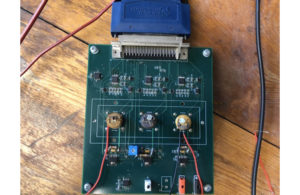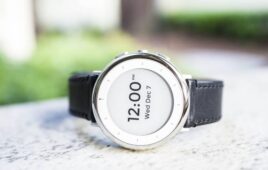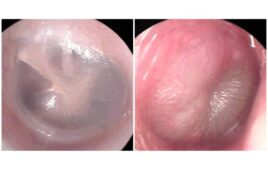
(Image from Ohio State University)
Researchers at Ohio State University are working on a breathalyzer-style system to test for COVID-19 and produce results in 15 seconds.
The device will sample breath for key biomarkers of the infection such as nitric oxide, according to engineering professor and primary investigator Perena Gouma, director of the university’s Advanced Ceramics Research Laboratory. Gouma posits that the device would be an alternative to current tests that are expensive, can take a long time to get results and require specialized personnel to do the sampling and to analyze the results.
The project builds upon Gouma’s invention of a hand-held breath monitor that may provide early detection of flu before symptoms appear, prior to her arrival at Ohio State. The COVID-19 breathalyzer involves advances in nanomaterials for detecting specific breath gases at the concentrations of interest for making a diagnosis, and is being developed with the university’s College of Veterinary Medicine, College of Medicine and the Wexner Medical Center.
COVID-19 is a zoonosis, a disease that comes from animals, and the veterinary medical school had years of experience studying coronaviruses and the flu in animals, Gouma explained in a news release. The technology evolved from sensors used for monitoring gases in an automotive exhaust.
“That’s how we started on breath analysis 20 years ago,” she said. “We are working on making these hand-held monitors that will be widely distributed and they’re very inexpensive.”
The project was awarded a nearly $200,000 National Science Foundation EAGER grant this month under a program supporting exploratory, early-stage research on untested, but potentially transformative, ideas or approaches.
In addition to nitric oxide, the device is designed to examine two other metabolites that could specifically indicate the presence of a COVID-19 infection, even in asymptomatic patients. Exhaling once in the breathalyzer may help with earlier detection of the onset of the disease, as well as with monitoring of the severity of the infection, which could help reduce the risk for worsening of the symptoms and allow timely therapeutic intervention, according to Gouma. The breathalyzer would not require trained personnel to perform the test, and results could be viewed directly on the display or be transferred wirelessly to the physician.
“Breath analysis is not really a technique that is used widely in the medical field yet, so it is considered early-stage work,” Gouma said. “(We) have a sensor device that detects nitric oxide and VOCs (volatile organic compounds) in breath and can be used to tell you about the onset of an infectious disease.”




